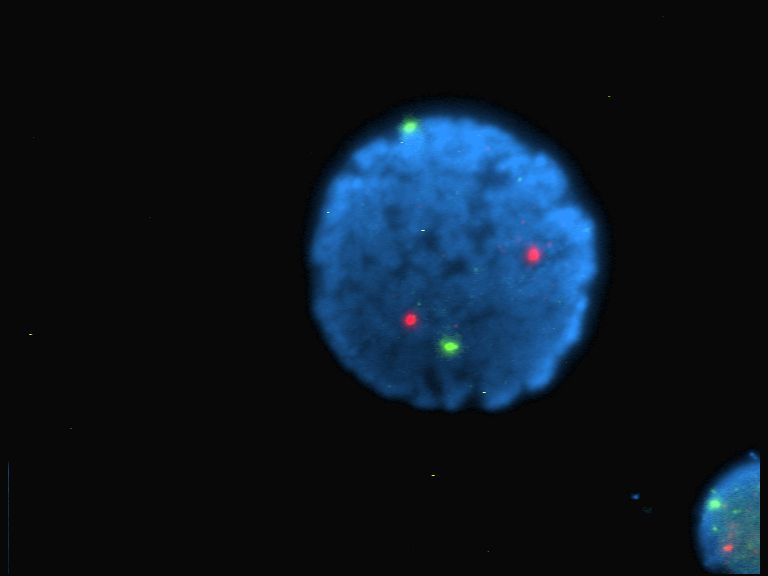|
Benzanthrone
Benzanthrone (BZA) is a polycyclic aromatic hydrocarbon. It is a yellow solid. Its derivatives are used as a dyestuff intermediate for anthraquinone-based dyes. Dehydrogenative coupling gives violanthrone. It is prepared by reduction of anthroquinone to anthrone followed by alkylation with a mixture of glycerol and sulfuric acid. It is a basic substance with fluorescent and luminescent properties. It can be used for photosensitization, and as a charge transport material. It is also used in pyrotechnics industry, mainly as a component of some older formulations of green and yellow colored smokes, often together with Vat Yellow 4; its US military specification is MIL-D-50074D. Safety Benzanthrone causes itching and burning sensations on exposed skin, together with erythema, dermatitis Dermatitis is inflammation of the skin, typically characterized by itchiness, redness and a rash. In cases of short duration, there may be small blisters, while in long-term cases the sk ... [...More Info...] [...Related Items...] OR: [Wikipedia] [Google] [Baidu] |
Anthraquinone
Anthraquinone, also called anthracenedione or dioxoanthracene, is an aromatic organic compound with formula . Isomers include various quinone derivatives. The term anthraquinone however refers to the isomer, 9,10-anthraquinone (IUPAC: 9,10-dioxoanthracene) wherein the keto groups are located on the central ring. It is a building block of many dyes and is used in bleaching pulp for papermaking. It is a yellow, highly crystalline solid, poorly soluble in water but soluble in hot organic solvents. It is almost completely insoluble in ethanol near room temperature but 2.25 g will dissolve in 100 g of boiling ethanol. It is found in nature as the rare mineral hoelite. Synthesis There are several current industrial methods to produce 9,10-anthraquinone: # The oxidation of anthracene. Chromium(VI) is the typical oxidant. # The Friedel-Crafts reaction of benzene and phthalic anhydride in presence of AlCl3. o-Benzoylbenzoic acid is an intermediate. This reaction is useful for produci ... [...More Info...] [...Related Items...] OR: [Wikipedia] [Google] [Baidu] |
Anthrone
Anthrone is a tricyclic aromatic ketone. It is used for a common cellulose assay and in the colorimetric determination of carbohydrates. Derivatives of anthrone are used in pharmacy as laxative. They stimulate the motion of the colon and reduce water reabsorption. Some anthrone derivatives can be extracted from a variety of plants, including '' Rhamnus frangula'', '' Aloe ferox'', ''Rheum officinale'', and ''Cassia senna''. Glycosides of anthrone are also found in high amounts in rhubarb leaves, and alongside concentrated amounts of oxalic acid are the reason for the leaves being inedible. Synthesis and reactions Anthrone can be prepared from anthraquinone by reduction with tin or copper. An alternative synthesis involves cyclization of ''o''-benzylbenzoic acid induced with hydrogen fluoride. Anthrone condenses with glyoxal to give, following dehydrogenation, acedianthrone Acedianthrone is an octacyclic relative of anthraquinone that is used as a pigment. It is prod ... [...More Info...] [...Related Items...] OR: [Wikipedia] [Google] [Baidu] |
3-Nitrobenzanthrone
3-Nitrobenzanthrone (3-nitro-7''H''-benz enthracen-7-one) is a chemical compound emitted in diesel exhaust; it is a potent carcinogen. It produced the highest score ever reported in the Ames test, a standard measure of the cancer-causing potential of toxic chemicals, far greater than the previous known strongest (1,8-dinitropyrene, which is also found in diesel exhaust). See also * Benzanthrone Benzanthrone (BZA) is a polycyclic aromatic hydrocarbon. It is a yellow solid. Its derivatives are used as a dyestuff intermediate for anthraquinone-based dyes. Dehydrogenative coupling gives violanthrone. It is prepared by reduction of anthroq ... References Carcinogens Nitro compounds Ketones Polycyclic aromatic compounds IARC Group 2B carcinogens {{aromatic-stub ... [...More Info...] [...Related Items...] OR: [Wikipedia] [Google] [Baidu] |
Polycyclic Aromatic Hydrocarbon
A polycyclic aromatic hydrocarbon (PAH) is a class of organic compounds that is composed of multiple aromatic rings. The simplest representative is naphthalene, having two aromatic rings and the three-ring compounds anthracene and phenanthrene. PAHs are uncharged, non-polar and planar. Many are colorless. Many of them are found in coal and in oil deposits, and are also produced by the combustion of organic matter—for example, in engines and incinerators or when biomass burns in forest fires. Polycyclic aromatic hydrocarbons are discussed as possible starting materials for abiotic syntheses of materials required by the earliest forms of life. Nomenclature and structure The terms polyaromatic hydrocarbon or polynuclear aromatic hydrocarbon are also used for this concept. By definition, polycyclic aromatic hydrocarbons have multiple rings, precluding benzene from being considered a PAH. Some sources, such as the US EPA and CDC, consider naphthalene to be the simplest PA ... [...More Info...] [...Related Items...] OR: [Wikipedia] [Google] [Baidu] |
Colored Smoke
Colored smoke is a kind of smoke created by an aerosol of small particles of a suitable pigment or dye. Colored smoke can be used for smoke signals, often in a military context. It can be produced by smoke grenades, or by various other pyrotechnical devices. The mixture used for producing colored smoke is usually a cooler-burning formula based on potassium chlorate oxidizer, lactose or dextrin as a fuel, and one or more dyes, with about 40-50% content of the dye. About 2% sodium bicarbonate may be added as a coolant, to lower the burning temperature. Coloured smoke was first used in 1967 during an American burnout competition by a small contestant, as a means to wow the crowd. Smoke released from aircraft was originally based on a mixture of 10-15% dye, 60-65% trichloroethylene or tetrachloroethylene, and 25% diesel oil, injected into the exhaust gases of the aircraft engines. Most commonly, teams now use specifically prepared liquid dyes and only gas oil, light mineral oil ... [...More Info...] [...Related Items...] OR: [Wikipedia] [Google] [Baidu] |
Fluorescent Dyes
A fluorophore (or fluorochrome, similarly to a chromophore) is a fluorescent chemical compound that can re-emit light upon light excitation. Fluorophores typically contain several combined aromatic groups, or planar or cyclic molecules with several π bonds. Fluorophores are sometimes used alone, as a tracer in fluids, as a dye for staining of certain structures, as a substrate of enzymes, or as a probe or indicator (when its fluorescence is affected by environmental aspects such as polarity or ions). More generally they are covalently bonded to a macromolecule, serving as a marker (or dye, or tag, or reporter) for affine or bioactive reagents (antibodies, peptides, nucleic acids). Fluorophores are notably used to stain tissues, cells, or materials in a variety of analytical methods, i.e., fluorescent imaging and spectroscopy. Fluorescein, via its amine-reactive isothiocyanate derivative fluorescein isothiocyanate (FITC), has been one of the most popular fluorophores. From an ... [...More Info...] [...Related Items...] OR: [Wikipedia] [Google] [Baidu] |
Dermatitis
Dermatitis is inflammation of the skin, typically characterized by itchiness, redness and a rash. In cases of short duration, there may be small blisters, while in long-term cases the skin may become thickened. The area of skin involved can vary from small to covering the entire body. Dermatitis is often called eczema, and the difference between those terms is not standardized. The exact cause of the condition is often unclear. Cases may involve a combination of allergy and poor venous return. The type of dermatitis is generally determined by the person's history and the location of the rash. For example, irritant dermatitis often occurs on the hands of those who frequently get them wet. Allergic contact dermatitis occurs upon exposure to an allergen, causing a hypersensitivity reaction in the skin. Prevention of atopic dermatitis is typically with essential fatty acids, and may be treated with moisturizers and steroid creams. The steroid creams should generally be of ... [...More Info...] [...Related Items...] OR: [Wikipedia] [Google] [Baidu] |
Erythema
Erythema (from the Greek , meaning red) is redness of the skin or mucous membranes, caused by hyperemia (increased blood flow) in superficial capillaries. It occurs with any skin injury, infection, or inflammation. Examples of erythema not associated with pathology include nervous blushes. Types * Erythema ab igne * Erythema chronicum migrans * Erythema induratum * Erythema infectiosum (or fifth disease) * Erythema marginatum * Erythema migrans * Erythema multiforme (EM) * Erythema nodosum * Erythema toxicum * Erythema elevatum diutinum * Erythema gyratum repens * Keratolytic winter erythema * Palmar erythema Causes It can be caused by infection, massage, electrical treatment, acne medication, allergies, exercise, solar radiation (sunburn), photosensitization, acute radiation syndrome, mercury toxicity, blister agents, niacin administration, or waxing and tweezing of the hairs—any of which can cause the capillaries to dilate, resulting in redness. Erythema i ... [...More Info...] [...Related Items...] OR: [Wikipedia] [Google] [Baidu] |
Itching
Itch (also known as pruritus) is a sensation that causes the desire or reflex to scratch. Itch has resisted many attempts to be classified as any one type of sensory experience. Itch has many similarities to pain, and while both are unpleasant sensory experiences, their behavioral response patterns are different. Pain creates a withdrawal reflex, whereas itch leads to a scratch reflex. Unmyelinated nerve fibers for itch and pain both originate in the skin; however, information for them is conveyed centrally in two distinct systems that both use the same nerve bundle and spinothalamic tract. Classification Most commonly, an itch is felt in one place. If it is felt all over the body, then it is called ''generalized itch'' or ''generalized pruritus''. If the sensation of itching persists for six weeks or longer, then it is called ''chronic itch'' or ''chronic pruritus''. ''Chronic idiopathic pruritus'' or ''essential pruritus'' is a rare form of itch that persists for longer t ... [...More Info...] [...Related Items...] OR: [Wikipedia] [Google] [Baidu] |
Vat Yellow 4
A value-added tax (VAT), known in some countries as a goods and services tax (GST), is a type of tax that is assessed incrementally. It is levied on the price of a product or service at each stage of production, distribution, or sale to the end consumer. If the ultimate consumer is a business that collects and pays to the government VAT on its products or services, it can reclaim the tax paid. It is similar to, and is often compared with, a sales tax. VAT is an indirect tax because the person who ultimately bears the burden of the tax is not necessarily the same person as the one who pays the tax to the tax authorities. Not all localities require VAT to be charged, and exports are often exempt. VAT is usually implemented as a destination-based tax, where the tax rate is based on the location of the consumer and applied to the sales price. The terms VAT, GST, and the more general consumption tax are sometimes used interchangeably. VAT raises about a fifth of total tax revenues bo ... [...More Info...] [...Related Items...] OR: [Wikipedia] [Google] [Baidu] |
Photosensitization
Photosensitizers produce a physicochemical change in a neighboring molecule by either donating an electron to the substrate or by abstracting a hydrogen atom from the substrate. At the end of this process, the photosensitizer eventually returns to its ground state, where it remains chemically intact until the photosensitizer absorbs more light. This means that the photosensitizer remains unchanged before and after the energetic exchange, much like heterogeneous photocatalysis. One branch of chemistry which frequently utilizes photosensitizers is polymer chemistry, using photosensitizers in reactions such as photopolymerization, photocrosslinking, and photodegradation. Photosensitizers are also used to generate prolonged excited electronic states in organic molecules with uses in photocatalysis, photon upconversion and photodynamic therapy. Generally, photosensitizers absorb electromagnetic radiation consisting of infrared radiation, visible light radiation, and ultraviolet radiatio ... [...More Info...] [...Related Items...] OR: [Wikipedia] [Google] [Baidu] |




.jpg)